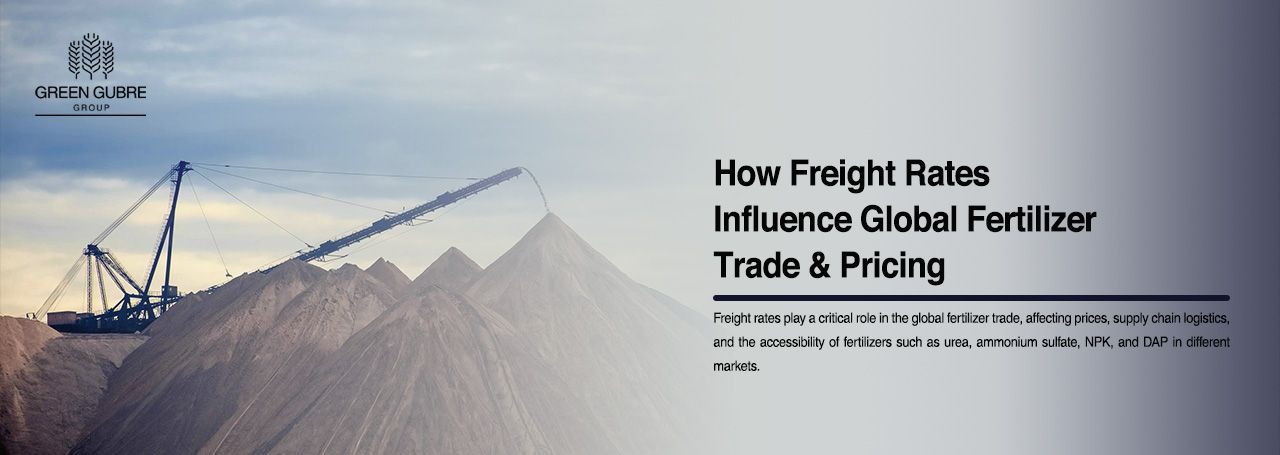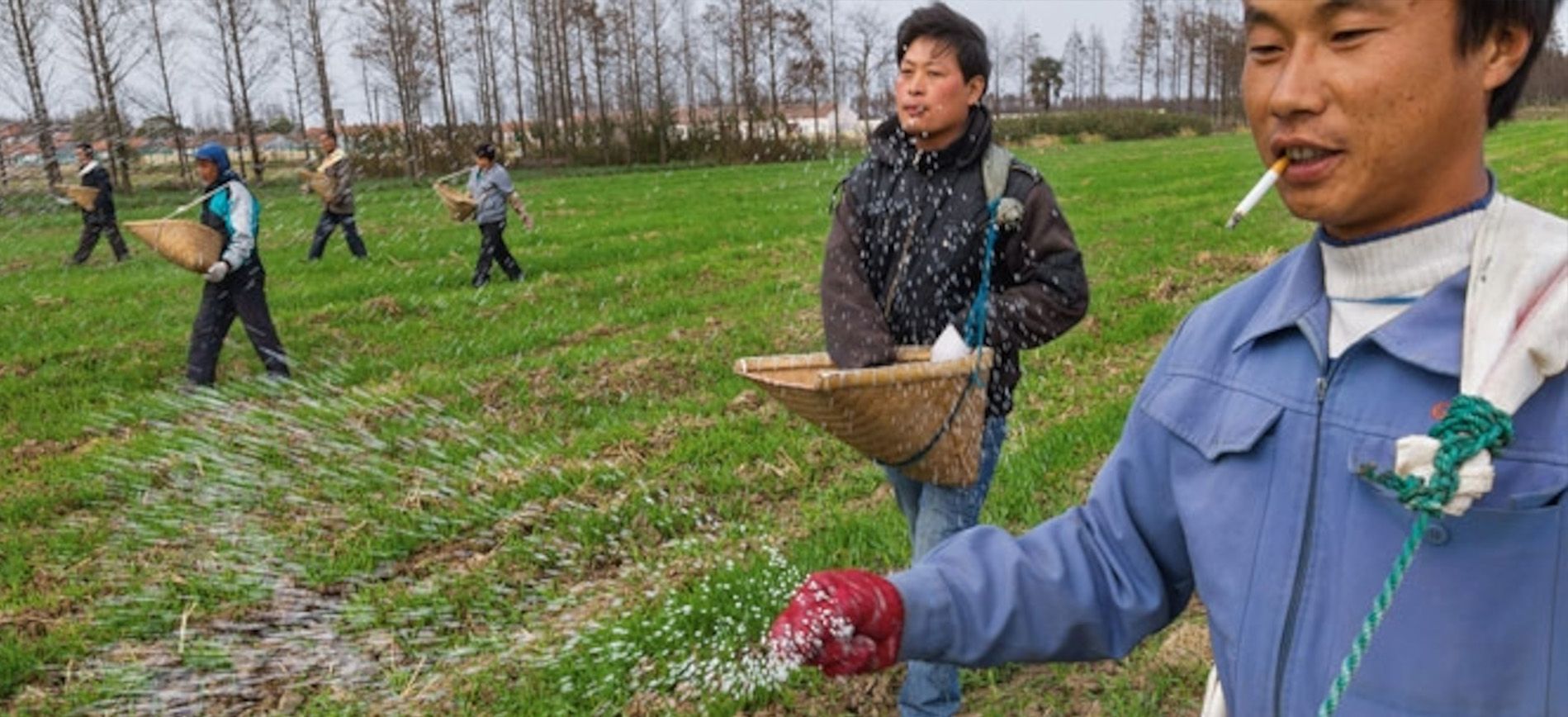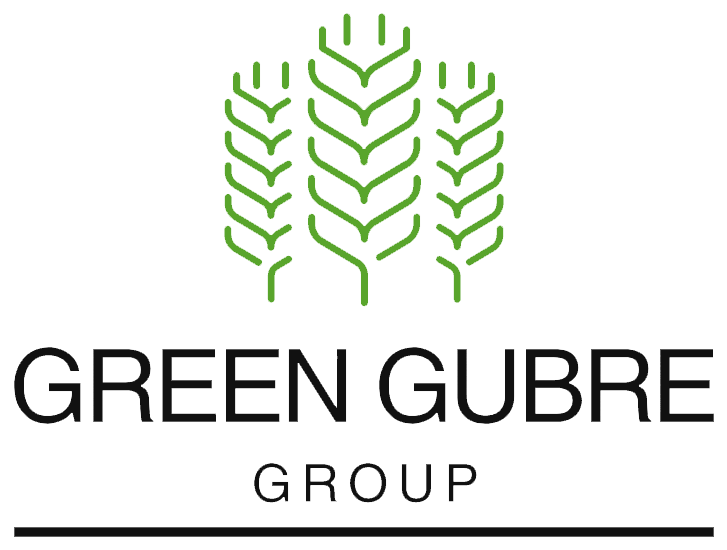How Freight Rates Influence Global Fertilizer Trade & Pricing
How Freight Rates Influence Global Fertilizer Trade & Pricing

Freight rates play a critical role in the global fertilizer trade, affecting prices, supply chain logistics, and the accessibility of fertilizers such as urea, ammonium sulfate, NPK, and DAP in different markets. Since fertilizers are shipped in large volumes via maritime transport, fluctuations in freight costs can lead to significant price variations.
With factors like
fuel prices, vessel availability, port congestion, and geopolitical events affecting shipping rates, understanding the
impact of these logistics costs on fertilizer pricing is not only important but also empowering for buyers and suppliers, giving them a sense of control and confidence in their decision-making.
Why Freight Costs Matter in Fertilizer Trade
1. Freight as a Major Cost Factor: Fertilizers are primarily transported via bulk shipping, where freight costs can significantly influence final prices.
2. Regional Price Variations: A rise in freight costs makes fertilizers more expensive in some markets while lowering competitiveness in others.
3. CIF vs. FOB Pricing:
- CIF (Cost, Insurance, Freight): The seller covers freight, increasing the overall cost.
- FOB (Free on Board): The buyer arranges shipping, potentially reducing costs if they secure better freight deals.
4. Market Impact: Rising shipping costs can reduce fertilizer affordability, while logistics disruptions can cause shipment delays, affecting agricultural production cycles.
Key Factors Affecting Fertilizer Freight Rates
1. Fuel Prices & Bunker Costs
- Higher crude oil prices increase marine fuel (bunker) costs, raising freight rates.
- Example: In 2024, rising OPEC crude oil prices led to a 15% hike in fertilizer shipping costs.
2. Seasonal Demand & Agricultural Cycles
- Planting seasons in key markets (e.g., India’s monsoon, Brazil’s soybean season) drive up freight rates.
- Off-season purchases often secure lower shipping costs.
3. Bulk Vessel & Container Availability
- Shortages of bulk vessels increase spot freight rates, while port congestion can delay shipments.
- Example: The container shortage in 2021 caused shipping costs to surge, affecting global fertilizer trade.
4. Geopolitical & Trade Policies
- Sanctions, port closures, and trade tensions impact global shipping lanes.
- Example: The Russia-Ukraine war shifted fertilizer exports, increasing freight costs to Europe.
5. Port Infrastructure & Logistics Bottlenecks
- Efficient ports (e.g., Rotterdam, Singapore) have lower costs, while congested ports increase shipping expenses.
- Example: West African ports face logistics inefficiencies, increasing unloading costs for imported fertilizers.
| Trade Route | Typical Fertilizer Cargo | Average Freight Cost (USD/MT) |
|---|---|---|
| Middle East → India | Urea, DAP, NPK | 25-40 USD |
| Russia → Brazil | Potash, Phosphates | 55-70 USD |
| North Africa → Europe | Phosphates, Urea | 20-35 USD |
| China → Africa | NPK, Urea | 45-65 USD |
| US Gulf → Southeast Asia | Ammonia, UAN | 55-75 USD |
Fertilizer Trade Routes & Freight Costs
Freight costs fluctuate due to fuel prices, seasonal demand, and port congestion.
strategies to Manage Freight Costs in Fertilizer Trade
1. Optimize Shipping Schedules & Bulk Purchasing
- Buying fertilizers off-season reduces freight costs.
- Bulk shipments help lower per-ton freight rates.
2. Diversify Supply Chains
- Sourcing fertilizers from multiple regions (Middle East, China, North Africa) not only helps mitigate logistics disruptions but also provides security and reassurance in the face of market uncertainties, giving the audience a sense of stability and confidence.
3. Choose the Right Freight Terms
- CIF: Best for buyers without logistics expertise.
- FOB: Preferred by large buyers who negotiate better shipping rates.
4. Work with Reliable Freight Partners
- Freight forwarders can reduce costs by consolidating shipments and optimizing vessel space.
Conclusion
Freight rates are a key factor in global fertilizer pricing, affecting supply chains and market competitiveness. Buyers and suppliers must monitor logistics trends, optimize shipping schedules, and diversify supply chains to manage costs effectively.
By staying informed on
fuel prices, trade policies, and seasonal demand, fertilizer industry players cannot only navigate market fluctuations but also feel proactive and in control of their business decisions, enhancing their sense of agency and control.
For
expert fertilizer procurement and logistics support, contact
Green Gubre Group today. We're here to help you navigate the complexities of the global fertilizer trade.
References
- International Fertilizer Association (IFA): Global Fertilizer Trade & Logistics
- Argus Media: Fertilizer Freight Rate Analysis
- S&P Global: Maritime Shipping Trends & Fertilizer Logistics
- World Bank: Trade & Transport Costs in Agriculture
- International Maritime Organization (IMO): Fuel Price Regulations & Shipping Costs




